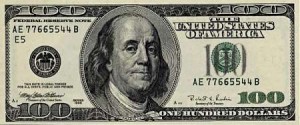Investing is simply putting your money to work for you!
Faced with a dizzying array of investment options?
Deciding where to put your money can be daunting. But starting small doesn’t mean it won’t pay off big.
By Richard Jenkins
MSN Money
I’ll let you in on a little secret about investing: It’s not nearly as hard as you think.
However, the fact that most people do it badly might lead a reasonable person to believe the opposite.
How badly? A study by Dalbar, a Boston investment research firm, found that from 1988 to 2008, when the S&P 500 Index ($INX) grew at an average annual rate of 11.8%, individual investors in equity mutual funds saw average returns of 4.5% a year, before taxes.
That’s downright pitiful.
Interactive chart: See how your money can grow over time
So with the bar set appropriately low, I’m going to show you a method for starting and managing a portfolio that requires very little money!
So Many Investors, so little profit
But first, let’s look at the reasons for the awful performance of most investors. There are as many reasons as there are overpaid CEOs, of course, but here are the primary culprits:
Market timing. A lot of investors believe there’s a right time and a wrong time to invest in stocks, and that it’s possible to predict which is which. According to a classic study by William F. Sharpe, Nobel Prize-winning economist and a founder of Modern Portfolio Theory, a person who attempts to time the market needs to be right roughly three times out of four to match the performance of a buy-and-hold investor. Given that the market tends to make major moves in response mainly to unexpected events, that can be a tough mark to hit, as the dismal record of individual investors demonstrates.
Buying high and selling low. This is one consequence of failing to time the market correctly, and it most often results from investors chasing the latest hot stock or mutual fund. Investments with the biggest gains will often turn out to suffer spectacular losses as well, leading to panic and a decision to sell at or near the bottom. A portfolio’s tendency to rise and fall in dramatic fashion is called volatility and is to be devoutly avoided by those who like to sleep at night.
Failure to diversify. Most often, the product of an accumulating pile of company stock, usually in a 401k or IRA can also reflect a poor understanding of different types of investments and how they move in relation to one another. Diversification and strategic asset allocation are the keys to minimizing volatility while maximizing returns.
So what is this strange voodoo called asset allocation? It’s a method for spreading your investment dollars across different types of investments (while diversification usually means buying a variety of securities within each investment type). It’s also the core of Modern Portfolio Theory.
And before you fall asleep on me, let me show you just how well it works. Roger C. Gibson, the author of “Asset Allocation: Balancing Financial Risk,” conducted a 35-year study of the performance of a variety of diversified portfolios. The simplest of these, for illustration purposes, consists of 25% each of four major asset types:
U.S. stocks, represented by the S&P 500 Index.
Foreign stocks, represented by the MSCI EAFE (Europe, Australasia and Far East) Index. A common ETF, with the symbol EFA, tracks this index.
Real estate, represented by the National Association of Real Estate Investment Trusts (NAREIT) Equity Index.
Commodities such as gold and oil, represented by the S&P Goldman Sachs Commodity Index.
Taming the Bear
When the third edition of Gibson’s book was published in 1999, near the end of a 16-year bull market, the value of the equal-weight portfolio was running neck and neck with the sizzling-hot S&P 500. Just 10 years later, the diversified portfolio is worth 77% more than the stock-only portfolio. It’s during bear markets that asset allocation really makes a difference.
The key to success is finding asset classes that tend to respond differently to the economy’s ups and downs. For example, in 1973 and 1974, when domestic and foreign stocks and real estate fared badly, commodities soared. Over the next two years, commodities tanked while stocks and real estate gained substantially.
But what do you do if you’re just getting started and have only a few hundred, a thousand or maybe a few thousand dollars to launch your assault on the capital markets? Fear not! The range of low-cost mutual funds and other instruments available to you has exploded in recent years, and I’m going to give you a step-by-step guide to building a smart, secure and properly diversified portfolio. This strategy works for building a portfolio with any amount of money, and it’s great for those starting small.
Continued: Investing on a shoestring
Other Stories
British Pound Continues Gradual Ascent
Stocks Rally After Three-Day Slide; Oil, Commodities Advance, Euro Weakens
Japan crisis puts world financial markets on edge
Buy, Sell or Hold
Currency Investing Where to Turn
Oil could reach $300 a Barrel
Gold prices will hit $2,500 in the near future
Global Investing Strategies
Profit From the One Company That Will Win the “Mobile Internet” Gold Rush
Different Investment Methods
Trade Spot Gold Online
Trade Oile Online
Trade Commodities Online
With Egypt in Turmoil, Oil and Food Prices Climb
Why you should Buy Rice Future
Shares rally as Mubarak resigns
Why you should Buy Rice Future






